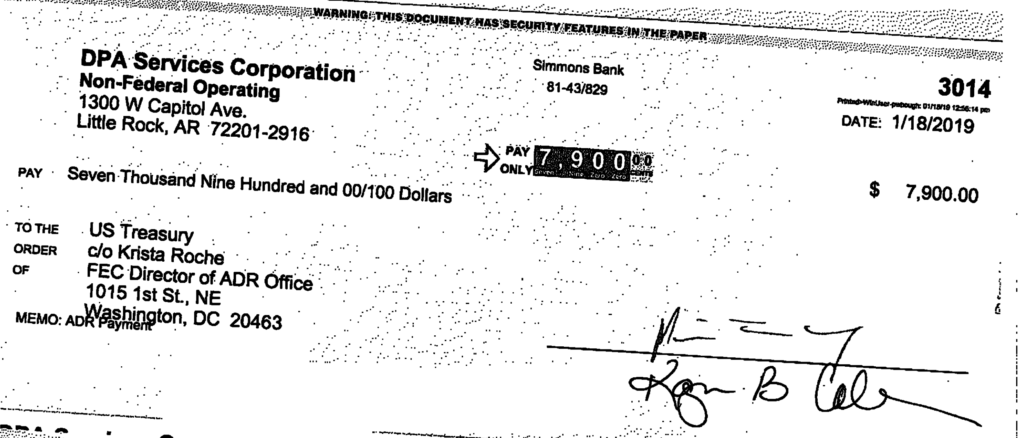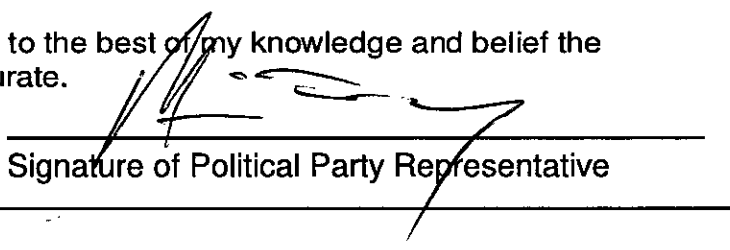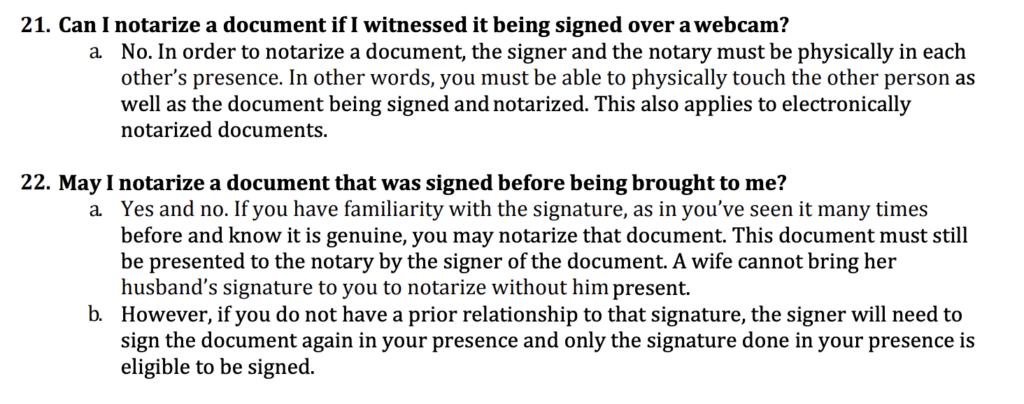It was a few days past Valentine’s Day, 2018, and a few minutes past 1am. My fiancé and I were sitting at a table near the bar at Midtown Billiards. As I was finishing the requisite Midtown burger and planning to leave, I noticed a familiar figure ordering drinks at the bar.
“That’s Michael John Gray,” I said. The look on her face reminded me that not everyone was into this stuff at the level of granularity that I was. “The chair of the state Democratic Party,” I added.
As I eyed him at the bar, I immediately noticed three things: he was not wearing a wedding ring, he was there with a woman who was not his wife,1 and he was paying in cash. I assumed that at least the first two items, if not all three, were related, as the brunette in his company was also not wearing a wedding ring.
Now, your reaction when observing such things may vary from mine, but, once I saw them kiss at the bar, I decided that I needed to try to get some photos of them.2 I slid out of my seat and closer to the bar and snagged these as they waited for their drinks:


Drinks in hand, Gray and his friend moved toward the back half of Midtown, up against the north wall, near the pool table and some high-tops. That is where they were standing when I snapped these:



Midtown was quickly filling up to the point that further picture-taking was going to be difficult. More importantly, we were tired and wanted to go home. So we headed out shortly after those pictures were taken, and I rode home sure of what I had seen and unsure of what to do with the information.
From time to time since then, I would think about the incident. Initially, I marveled at Gray’s bad luck of unknowingly running into someone at Midtown at 1am who recognized him, knew what his wife looked like, and was interested enough to notice and take pictures. The more I thought about it, however, the more I realized that this wasn’t bad luck so much as incredibly poor decision-making.
After all, the only reason I saw the event unfold is because Gray–the head of the Arkansas Democratic Party–decided it was a good idea to take a woman other than his wife to a bar frequented by Democrats and liberals and to then start making out with her right there in front of God and everyone. What kind of hubris does it take to think no one would recognize you in that scenario? Why make such an obvious error in such a public setting?
Fast forward fourteen months or so. A perfect storm of events happened (or, more accurately, were brought to my attention) that brought Gray back into my thoughts and again caused me to wonder about his decision-making and, ultimately, his control over (and leadership of) the Democratic Party of Arkansas. We’ll touch on some of these in the remainder of this post, then dive deeper into some of them in a subsequent post or posts later this week.
Up first, rumors about questionable financial practices, record-keeping, and reporting within the party.
It is worth noting from the outset that Arkansas’s reporting requirements for political parties are laughably bad. For example, a quarterly report for the current reporting period does not have to show beginning or ending balances for the reporting periods; each quarter just sort of exists in a vacuum, untethered to anything that happened before, at least from the perspective of someone trying to figure out where the money has gone. Nevertheless, even without an updated starting and ending balance, the reports can shed some light on things (or, at a bare minimum, raise some red flags that warrant further explanation).
In contrast, the Federal Election Commission (FEC) has very stringent and detailed reporting requirements. Unfortunately, FEC filings do not mirror everything that happens at the state level, and the state level filings don’t mirror federal filings. Parties have segregated federal and non-federal accounts, but things such as salaries, administrative costs, and similar things end up being reported on both when there are shared activities. Nonetheless, the FEC is the canary in the coal mine for reporting accuracy and compliance, and well… let’s just hope the canary has really good health insurance, because it has been one seriously sick bird.3
Let’s start with the most curious of the state filings, the first quarter of 2018.
1Q 2018
This report was due by April 15, 2018, and covered all money in or out of the party’s coffers between January 1 and March 31 of that year.4 When April 15 came around that year, the party filed only a single page (without supporting documents), showing contributions of $92,488 and expenditures of $194,531. A month later, the party filed an amended first-quarter report, in which they showed contributions of $476,520 and expenditures of $175,140 (meaning the first report was wrong by over $385,000 in contributions and around $20,000 in expenditures).
Why did they initially fail to file a real report on April 15, 2018? That’s anyone’s guess, but one possible reason could have been that the FEC sent nine (9) of those 25 RFAIs between January 1 and January 15.5 So they probably had their hands a little full.
Fast forward to October 16, 2018, just a few weeks before the election, and we see another amended report for 2018 1Q. In that one, the contribution amount remained at $476,520, but the expenditures increased by $5,700 to $180,840. A look at the last page of that report shows that the extra $5,700 came from these expenditures:
Those are campaign contributions to Kati McFarland ($3,000) and Stele James ($2,700) that the party made on March 31, 2018. Yet, for whatever reason, these were not disclosed in the May 2018 amendment, which was filed nearly seven weeks after those expenditures were made, and it took until mid-October 2018 before anyone reported them.
These campaign contributions are problematic beyond just the untimely reporting, however. McFarland filed zero campaign contribution & expenditure (CC&E) reports for her campaign, so there’s no record on her end of receiving this money.6 Similarly, a payment of $3,000 to Darrell Stephens on February 28, 2018, was listed on the DPA’s first and second amended 1Q 2018 reports. Yet, that payment was never listed on any of Stephens’s CC&Es. As for James, he filed his reports as required, and he listed the amount as a non-cash contribution, rather than as a monetary contribution (which is how the DPA classified it), because the DPA did not make James pay the full filing fee when he signed up to run for office.
The problem with those contributions doesn’t stop there, either. According to the DPA’s records, McFarland and Stephens both received $3,000 from the DPA. Had both candidates listed those contributions and allocated no more than $2,700 to the primary or general elections, those amounts would be fine. As it stands, however, those are simply $3,000 contributions to candidates where the maximum allowable contribution for any one election was $2,700.
More broadly, though, how could the party be off by $385,000 in contributions when filing the first report? Based on the lack of any documentation filed with the original 1Q 2018 report, a likely explanation could be that they guessed at the amount so that they didn’t miss the filing deadline. That’s possible, but that’s not a good explanation at all, as the report specifically requires that the person signing (in this case, Michael John Gray) attest under oath that the amounts listed are correct.
Simply guessing at the amounts would make that attestation a lie. Yet…it’s hard to come up with another explanation for the discrepancy that doesn’t seem even worse in terms of organization and record keeping. Then again, perhaps Gray’s attention was elsewhere during that quarter?
4Q 2018
The contribution and expenditure report for the fourth quarter of 2018 was due by January 15, 2019, and it was filed on that date. If you look at the report, you’ll see that it says the party received $336,646 in itemized contributions, and there are 23.5 pages (with 12 entries each) of contributions.
Thing is, $336,646 in 23.5 pages would require each page to average $14,325 in contributions. Looking at that report, however, the actual contributions listed don’t come anywhere close to the claimed total.7 The actual total for itemized contributions on that report, at least based on what was listed in the report, is $56,795.11. Which means the report claims about $280,000 in contributions that simply don’t appear anywhere on the report.
So…I don’t know what is going on with that report. I only know that signing the line saying you have examined the report and that you believe that the information is complete, true, and accurate, means either that Gray is really, really bad at math or he did not actually examine the report in any manner that would let him have the slightest clue whether the report was accurate. Neither answer is good.
Other Reporting Errors
While 1Q 2018 was the most startling and 4Q 2018 is confounding, they were not the only reports that raise red flags.
The 2Q 2017 report as initially filed showed $38,689 in contributions and $8,564 in expenditures. A month later, on August 15, 2017, the DPA filed an amended 2Q 2017 report that listed $87,997 in contributions (a difference of $49,308) and $115,910 in expenditures (a difference of $107,346). The first report omitted every individual contributor, listing only PAC and organizational contributions, which is odd enough, but it also failed to list any expenditures other than four payments to Simmons Bank, a payment to Rural Arkansas First PAC, and a payment to Deluxe Business Solutions. There is simply no way a person could look at the original 2Q 2017 report, see expenditures of $8,564, and think that was anywhere remotely close to the real total, especially when you consider that there was a payment of $21,500 to the Little Rock Marriott on June 14 and monthly payroll alone was far more than $8,564 for the three months covered by the report.
Similarly, the 3Q 2017 report was first filed on October 16, 2017, with $178,094 in contributions and $206,676 in expenditures. Over seven months later, on May 18, 2018, that report was amended to $220,628 in contributions and $208,755 in expenditures. Worse still, had anyone actually looked at the original 3Q 2017 report before signing and filing it, they would have noticed that the listed total on the first page ($178,094) was not even correct according to that report, as the last page showed a total of $212,519 in contributions.
Curiously, the only difference between the contributions in the original and amended reports was an extra $8,100 in unitemized contributions. (Why it took seven months to realize that there was an extra $8,100 in unitemized contributions is difficult to say. If these reports were required to have additional detail and we did away with the idea of unitemized contributions or expenditures, we might reach that level of transparency, but that is a pipe dream at this point.)
The 4Q 2017 report was also wrong and was subsequently amended in May 2018. As first filed, the report listed $62,592 in contributions and $88,176 in expenditures. As amended four months later? $77,113 in contributions and $119,120 in expenditures. As with the 3Q 2017 report, had anyone looked at the original 4Q report, he or she would have seen that the totals listed on the first page didn’t match the totals in the report, as the contributions in the original totaled to $100,968 (not $62,592). Most concerning, perhaps, is the fact that, for both this report and the 3Q 2017 report, it is hard to believe that Gray actually read the report before signing it under oath.
FEC Fines & Payments
Following the 2014 election cycle, the DPA was investigated by the Federal Election Commission. As a result of that investigation, the party agreed to a proposed civil penalty in 2018 in the amount of $7,900. On January 18, 2019, the DPA sent a check in that amount to the FEC, and the FEC issued an acknowledgment letter on February 5, 2019.
Considering the 2014 election cycle was before Gray took over as chair of the DPA, this fine would not be particularly noteworthy had it been handled properly on the state-reporting end of things. As you might have guessed, however, it was not.
If you look at the 1Q 2019 report, you will find the $7,900 expenditure itemized as a payment to the U.S. Treasury at the IRS office in Ogden, UT. That is incorrect. The actual check in this instance was made out to the U.S. Treasury, FEC Director of ADR Office, 1015 1st St. NE, Washington, DC 20463. So that entry on that report is wrong on its face.

More troubling, however, is the file (and fine) for FEC investigation ADR 840. As noted in the September 15, 2017 referral from the FEC investigator, the DPA “was sent sixteen (16) Requests for Additional Information (RFAIs) for reporting errors including excessive, prohibited and other impermissible contributions or transfers, mathematical discrepancies, failure to provide supporting schedules, federal election activity/levin funds, allocated federal and non-federal activity, and failure to properly itemize loans.”8
The DPA received notice of the investigation in mid-October 2017. By February 20, 2018, the DPA, with the help of a lawyer from Washington DC, had negotiated a settlement of $10,400 with the FEC. Payment of that fine was due by February 20, 2019. That date came and went, however, without the DPA paying the FEC fine, as did all of the days in March. It was not until April 11, 2019–50 days after the fine’s due date–that the DPA finally cut a check to the FEC. Meaning, the DPA managed to send (but incorrectly record) the $7,900 fine only a few weeks after it was agreed to, but failed to send the $10,400 fine on time despite having a full year in which to send it. At least they recorded the late payment correctly on their quarterly report, I guess.
Deficits Galore
At the risk of understatement, it is accurate to say that the DPA has a real problem with deficit spending. Beginning with the first quarter of 2017, DPA filings show eight of ten quarters in which the party spent more than they took in over the same period. Since there is no way to see what a beginning balance was for any particular quarter, simply looking at money in and money out in a given quarter is an incomplete picture, but it is still one worth looking into.
By quarter, and using only the numbers reported by the DPA, the reports under Gray’s leadership show the following surplus (or deficit):
- 2Q 2017: ($27,913)
- 3Q 2017: $11,873
- 4Q 2017: ($42,007)
- 1Q 2018: $295,680
- 2Q 2018: ($55,334)
- 3Q 2018: ($20,555)
- 4Q 2018: ($167,250)
- 1Q 2019: ($124,071)
- 2Q 2019: ($24,362)
All told, that is a net deficit of $153,939 with Gray at the helm. Since the second quarter of 2018 alone, the party has spent $391,572 more than they’ve taken in over that same time frame.9 Some deficit spending, especially in the fourth quarter of election years, makes sense. But spending $124,071 more than you raised in the first quarter of 2019? That’s less defensible, no matter how much fun people might have had listening to (checks notes) Blanche Lincoln (double-checks notes, shakes head) at the Fisher-Shackelford Dinner.
Karyn Bradford-Coleman – Salary
Looking over the problems detailed above, a person might wonder how so many reports can be so incorrect. More to the point, a person might start assuming that Michael John Gray is the only person responsible for the DPA’s record-keeping and reporting. This assumption would be incorrect; Gray is merely the person who is required to sign the reports as true and correct. It is another name that appears on all of the reports that has much more day-to-day responsibility for DPA money: Karyn Bradford-Coleman.
Karyn Bradford-Coleman is currently the Chief of Staff for the Arkansas Democratic Party. She is also the notary whose signature appears on every report from the second quarter of 2017 to present. She is a signor on the DPA checking account and, according to several sources, has positioned herself to be totally in control of the DPA checkbook.
Bradford-Coleman was hired by the DPA in July 2017, and she left a maintenance-related position at Pulaski County Special School District to take the DPA job. Keeping in mind that the quarterly reports only show net pay, so we had to reverse engineer things a bit to estimate gross pay, when Bradford-Coleman began at DPA, her gross salary was in the neighborhood of $43,500 to 48,500. (It is a bit of a large range because we have no idea how much is withheld for taxes or things like insurance, 401(k) etc.)
In November 2017–a mere four months after starting–Bradford-Coleman’s salary jumped up about 12%, which would be somewhere in the $4,500 a year range. The following month, it was bumped up by about 12% again. When you compound those two raises, by the end of her first six months, she had received a 27% pay increase.
In April 2018, when she was still two months shy of her one-year anniversary at DPA, Bradford-Coleman’s salary increased by about 7% from where she ended 2017. In mid-October of 2018, her salary increased again, by approximately 10%. That would translate to an approximate gross pay somewhere in the $70,000 range.
These raises are interesting for a few reasons. First, while $70,000 might sound reasonable for the Chief of Staff of a state political party, Bradford-Coleman didn’t assume that position until very late 2018/early 2019, so that salary had nothing to do with her current position. Moreover, the prior Chief of Staff, Taylor Riddle, took home roughly $1,000 less per pay period than Bradford-Coleman was already making.
Second, under DPA rules, these random raises are confusing because they do not seem to correspond with any party meetings, and Michael John Gray doesn’t have carte blanche to increase someone’s salary whenever he wants. As the party rules explain:

According to one member of the Executive Committee who was unaware of Bradford-Coleman’s raises, at no point did Gray seek the advice or consent of the Committee before giving Bradford-Coleman those pay increases.
Thirdly, over that same time period, Bradford-Coleman is the only person to have received raises like these. One other employee got an appreciable raise, and that was a bump of an estimated $7,000 per year, split over two raises that were five months apart, to an employee who had worked for free for a period of time when he started at the party. Another received a raise of about $28 per pay period in January 2018. Bradford-Coleman’s pay, on the other hand, was increased four times between July 2017 and December 2018.
Fourth, and most curious, the timing of these raises relative to what was going on at the party at the time makes little sense. In less than two years’ employment at the DPA, Bradford-Coleman’s gross salary has gone from around $44,000 to roughly $70,000, during a time when the party has been hemorrhaging money quarter to quarter. Between November and December 2017, she received around a 27% pay increase before she ever hit six months of employment. She received a 10% raise in mid-October 2018, at a time when the party was spending over $160,000 more than they took in (or over $430,000 more, if we go by the actual numbers on the report – see next article).10
Odder still, despite being promoted to Chief of Staff following Gray’s re-election as party chair in December 2018 and (ostensibly) having additional job duties and responsibilities, Bradford-Coleman did not receive any kind of pay raise for her new job. Instead, it appears that her pay went down slightly in March of this year. Whether that’s due to a decrease in salary or more expensive benefits or additional withholdings, I can’t say, but it is still confusing; why would a person take on a higher profile job with additional duties and responsibilities for the same pay, let alone for less pay within the same organization?
Karyn Bradford-Coleman – Improper Notarization
Bradford-Coleman is a licensed notary public with the state of Arkansas, notary commission number 12699758. More importantly, she has been the notary public who notarized every DPA quarterly report since 2Q 2017. I mention that because, well…look at this:



From top to bottom, those are Michael John Gray’s signatures on the 2Q 2019, 4Q 2018, and 3Q 2018 quarterly reports. If you think that those signatures look weirdly identical, you are correct. That is because they were made with a stamp and not signed by hand. The only reports we could locate where Gray did apparently sign rather than stamp were 2Q 2018 and 3Q 2017, show here:


Why does this matter? Well, according to a former Secretary of State employee who dealt with notaries and commissioning, “the usage of a stamp [is] the same as using a mark.” This is important because, in Arkansas, when somebody uses a mark instead of a signature, the mark must be made in the presence of the notary, a disinterested third-party witness (aside from the notary) must sign to attest that this person has chosen to use a mark as their signature, and the notary must write below the mark “Mark affixed by (Name of signer by mark) in the presence of
(name(s) of witnesses).”11
None of that was done here. Even assuming that Gray used the stamp in front of Bradford-Coleman–a dubious assumption, but whatever–the second and third requirements were not met here. Meaning that Bradford-Coleman has improperly notarized all but two of the quarterly reports and amendments filed since 2Q 2017.
Worse still, if Gray was not present to use the signature stamp in the same room and at the same time that Bradford-Coleman notarized the reports, that would appear to violate one or more additional rules, as the Secretary of State’s office explains:

Notarizing the stamped signature raises additional issues as well. It is unclear whether the Arkansas Ethics Commission considers a stamped signature to comply with the verification requirements, regardless of the presence of a notary stamp. Also, by using the stamp, there is nothing to establish that Gray actually reviewed the reports and attested to their accuracy, which was required to do.
And, if Bradford-Coleman or someone else stamped Gray’s signature onto the reports without his ever reviewing the documents…yeesh. Let’s hope that can of worms doesn’t come into play.
Summary
The spending and problems with the quarterly reports laid out above are far from the only issues one can discover from even a cursory glance at the documents. There are myriad payments that make little sense. There are questionable unitemized contribution/expenditure totals that are well outside the norm. A deeper dive into those reports (and the finances generally) is certainly warranted, even if the forms used for reporting make piecing a full picture together nearly impossible. That is coming in future posts over the coming days and weeks.
On a closing note, I realize that some folks are going to be mad about this post. It’s not that I don’t care about that reaction, but I find it wildly misplaced. Everything written above is documented. More to the point, everything above is something that anyone who donates to the party (or who simply hopes that the party will grow and be healthy long-term) should be concerned about. Because the fact of the matter is that Michael John Gray and Karyn Bradford-Coleman, individually and collectively, have put the party in a precarious position, as anyone could have pulled those same reports and raised the same issues. Better than it happen now, in August 2019, than happen a year from now with the election looming.
His wife and I are friends on various social media, and I knew that she was on vacation out of state that day. Plus, this woman looked nothing like her.↩
Why? I don’t know. That’s just how I am after years of blogging, I guess.↩
In the 2017-2018 election cycle, the FEC sent the DPA 25 Requests for Additional Information (RFAI), twenty two (22) of which were sent in 2018, and they were fined by the FEC – twice. In contrast, the Republican Party of Arkansas received six RFAIs in 2017 and six in 2018, and was not fined.↩
If you’re paying attention, you’ve already noticed that the photos at Midtown above occurred right in the middle of that time frame.↩
Literally, she filed no reports. Not one. That’s a separate story that is forthcoming.↩
The first two pages combined are about $12,000, pages 3 and 4 together total $600, and so on.↩
The violations occurred prior to MJG’s tenure, but several of the failures to provide information, as well as the entire ADR process with the FEC, occurred while he was in charge of the DPA.↩
And that is if you use the numbers supplied by the DPA; if you adjust for things like the 4Q 2018 report actually containing $279,851 less in contributions than the report states, the net deficit balloons to well over $600,000 just since 2Q 2018.↩
That October 2018 raise was pre-election, despite the fact that all party employees got a post-election bonus (including Bradford-Coleman).↩
See the explanation on page 13 of the state handbook for notaries public.↩

